In this article I describe yet another one of my tiles-in-motion ideas. Here an image is again first sliced and diced into tiles. Then columns of tiles transit around in separate lanes. The tiles drop out the bottom of the starting area and move up along the outside perimeter, half on one side and half on the other, and finally drop back to their starting location, reconstituting the source image. The concept is illustrated in the following route diagram for a 4 x 4 set of tiles:
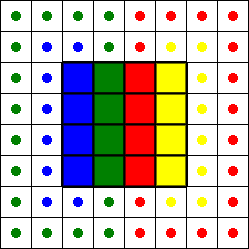
Slicing and dicing is not a problem as we have amptly demonstrated with the Perl script img2puzzle.pl and, more recently, with anim_reassemble.pl. The main obstacle is decidedly how to describe the route that each tile must follow. Clearly, each tile must hit specific waypoints on its way back to its starting position. The question is whether it is easier to have these waypoints declared explicitely as coordinates or described implicitely by some sort of metadata.
We did try at first using an explicit approach but the coding got rather messy and therefore difficult to debug. After much teeth nashing and further cogitating, we turned instead to the the control paradigm used by the Logo programming language and its turtle graphics as we once did for the script img2photomosaic_slides.pl.
A Logo "turtle" has parameters for orientation and position. These are normally manipulated by specifying the numbers of degrees to turn by and the length of the step to take. We can now modify this paradigm for the task at hand. Let a tile be a "turtle" whose inherent behaviour is to always be in motion, changing its current position at each step by a either a tile width or height. Controlling its path is then just a matter of associating an orientation to each step such that the resulting sequence will take it along the desired circuit. In addition, it must come to a stop once all its orientation directives have been executed. As we'll see, the implementation is trivial thought not necessarily straightforward.
As we have done for all our animation scripts, an XML file conveys all the required specifications.
To explain the XML tags, let's examine the data file monalisa_circuit.xml
( [Download monalisa_circuit.xml]
[MD5 checksum] ).
It governs the creation of the following animated GIF image:
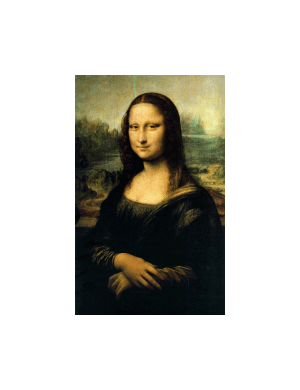
| XML file "monalisa_circuit.xml" | Remarks |
|---|---|
| <animation> | start of XML declaration |
| <output>monalisa_circuit.gif</output> | name of the output file |
| <delay>15</delay> | the number of milliseconds in delaying the image frame views |
| <loops>0</loops> | the number of times to cycle the animated GIF: 0 results in infinite looping |
| <image> | start of source image specifications |
| <file>Mona_Lisa.jpg</file> | name of the source file |
| <scale>0.20</scale> | scaling factor to be applied to the source. A value of "1" implies no scaling. It is applied to the source image prior to the final dimension adjustments for an integral number of tile rows and columns. |
| </image> | end of source image specifications |
| <tile> | start of tile specifications |
| <width>15</width> | in pixels |
| <height>15</height> | in pixels |
| </tile> | end of tile specifications |
| </animation> | end of XML declaration |
For the processing phase, Perl is used along with ImageMagick's drawing primitives accessed through its PerlMagick interface. The Perl script anim_circuits.pl, displayed below, is the resulting code. It is released for personal, non-commercial and non-profit use only.
The listing includes the line numbers in order to reference them in the following general remarks.
- Lines 001-010: Declaration of the required imports and constants. The modules Term::ANSIScreen and Win32::Console::ANSI are used simply to enhance the program's output. XML::Simple and XML::Parser are used to read and parse the XML data file respectively.
- Lines 014-015: Description of the required command line parameter. A typical
invocation would be:
perl anim_circuits.pl MonaLisa_circuit.xml
Here we are requesting that the XML file "MonaLisa_circuit.xml" be processed. A screen shot at the end of processing is: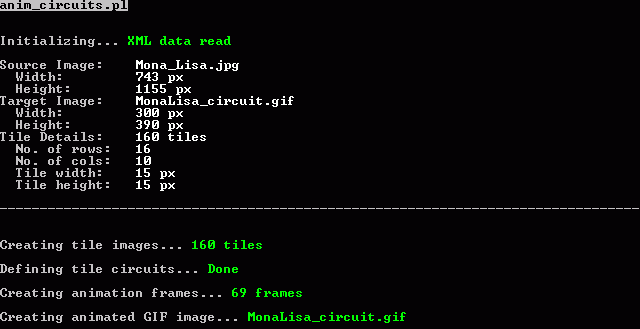
- Lines 023-026: Outputs the title of the program after clearing the screen and setting the STDOUT buffer to auto-flush.
- Line 028: Retrieves the command-line argument and checks for its existence.
- Line 029: The XML data is read and parsed into a hash.
- Lines 040-069: The purpose of this section is to establish first the width and height of the animated GIF image. The dimensions of the source image are obtained. Then an integral number of tile rows and columns is computed in accordance with the specified scale factor. Moreover, an even number of tile columns is set in order to insure a symmetric animation. Next, the canvas dimensions are established. The width accounts for the scaled source image plus half the number of tile columns transiting on the left side and half on the right. Along with the source image again, the height accounts for the number of extra rows at the top and bottom being both equal to half the number of tile columns. Finally the source image is scaled in accordance with the tile dimensions.
- Lines 074-103: This is the slice-and-dice portion of the script. The resulting tiles are stored in the array @Tiles. Given that the loop iterations are relative to the image but that we want the source image to be at the center of the animation, an offset must be added to their top-left x,y-coordinates to ensure their eventual location. The resulting values are then stored in the arrays @Tile_X and @Tile_Y.
- Lines 109-125: This is the hearth of the algorithm where the required oreintations are
defined. The two nested loops iterate over all the grid locations relative to the source image
and thus, by extent, span the complete tile set. The "if-else" statement can be viewed as segregating
the tiles into those moving on the left from those on the right. This exploits the mirror symmetry that
exists in the animation motion about the center vertical line. The array @Circuit stores
the step-by-step orientations for each tile. Note that index concordance between @Circuit
and the arrays @Tile_X and @Tile_Y is maintained as both sets of corresponding
loops unfold in the same direction across the source image. Each element of @Circuit
is a string whose order is the reverse of the required directives. This is just an artifice to
enable us to extract a single orientation using Perl's chop command, there not being
an equivalent built-in command for extracting from the front of a string.
The elements of @Circuit are a string of cardinal directions, with north pointing up the image. The transit for each tile consists of 5 separate legs. Focussing on the "left-hand-side" tiles for the moment, we have the following breakdown:- The first leg consists of downwards steps. Each tile first needs to do $NoTileRows - $row steps to reach the last image row. Then an additional $col steps are required to reach the bottom of its transit lane.
- The second leg of the journey covers the bottom part of the lane. The tiles in the first column moves west one step, those in the second column 3, etc. Thus in general, 2 * $col - 1 must be carried out.
- For the third, up leg, all tiles must execute at least $NoTileRows steps. Then there are 2 * $col - 1 additional steps required to bring them to the top of their lanes.
- The fourth leg simply reverses the direction of the steps taken during the second leg.
- The final leg has the tiles returning to their starting locations. There are $col steps needed to bring them to the first image row and then $row - 1 steps to cover the remaining distance.
push @Circuit, $Circuit[$NoTileCols * $row - $col];clones the appropriate element from the "left-hand-side" set and the next one
Circuit[$#Circuit] =~ tr/WE/EW/;inverts the east and west orientations.
Proving that the appropriate value is being referenced in the "push" statement requires knowing the following:- An M x N matrix A is mapped row-wise to a MN x 1 vector matrix v by defining
vj+N(i-1) = Aij
- If the matrix A has horizontal mirror symmetry, then
Aij = Ai,N-j+1for j > N/2 and N even. If we now express this latter property in terms of the former row-wise mapping, we obtainAij = vN-j+1+N(i-1)or, after simplifying and rearranging,Aij = vNi-j+1
- Lines 131-142: Two image objects are declared. $Frames stores all the frames that will make up the animated GIF whereas $Canvas is used to create each frame. The first frame is a clone of the scaled source image.
- Lines 144-166: The two nested loops control the creation of the image frames. The outer one repeats until all the tiles have returned to their starting locations. The proxy signal for this event is that all the orientation directives have been processed. The inner loop simply ensures that each tile is processed.
- Lines 150-161: Any outstanding orientation directive for the current tile is first retrieved. Then, depending on its value, the tile's position is changed by either a width or height length. If this was the last directive, the counter for the number of tiles back in place is incremented. Whether the tile has moved or not, it is always added to the frame canvas.
- Line 174: This is the last step which generates the animated GIF file in accordance with the sequence of frame images and the specified delay time and number of repeat cycles. Depending on the complexity of the animation and the size of the constituent images, this process can take some time.
If you have any questions regarding the code or my explanations, please do not hesitate in contacting me.
001 use strict;
002 use warnings;
003 use POSIX qw(ceil);
004 use Switch;
005 use Image::Magick;
006 use Term::ANSIScreen qw/:color :cursor :screen/;
007 use Win32::Console::ANSI qw/ Cursor /;
008 use XML::Simple;
009 $XML::Simple::PREFERRED_PARSER = 'XML::Parser';
010 use constant FATAL => colored ['white on red'], "\aFATAL ERROR: ";
011 #===== Copyright 2009, Webpraxis Consulting Ltd. - ALL RIGHTS RESERVED - Email: webpraxis@gmail.com ============================
012 # anim_circuits.pl: Creates an animated GIF that loops image parts around circuits.
013 #===============================================================================================================================
014 # Usage : perl anim_circuits.pl XmlFile
015 # Arguments : XmlFile = path of XML file describing the animation sequence.
016 # Input Files : See arguments.
017 # Output Files : The animated GIF specified in the XML data file.
018 # Temporary Files : None.
019 # Remarks : See http://www.webpraxis.ab.ca/transits/anim_circuits.shtml for details.
020 # History : v1.0.0 - September 19, 2009, - Original release.
021 #===============================================================================================================================
022 # 0) INITIALIZE:
023 $| = 1; #set STDOUT buffer to auto-flush
024 cls(); #clear screen
025 print colored ['black on white'], "$0\n\n\n", #display program name
026 colored ['reset'], 'Initializing... '; #report start of initialization
027
028 my $XmlFile = shift || die FATAL, 'No XML file specified'; #get path of XML data file
029 my $Anim = XMLin( $XmlFile ); #read the XML data file
030
031 my $ImageFile = $$Anim{image}{file}; #parameterize path of source image file
032 my $AnimFile = $$Anim{output}; #parameterize path of target image file
033 my $TileWidth = $$Anim{tile}{width}; #parameterize pixel width of a tile
034 my $TileHeight = $$Anim{tile}{height}; #parameterize pixel height of a tile
035 my @Spinners = ( '-', '\\', '|', '/' ); #define symbols for spinner
036 die FATAL, "Cannot locate image file\n" unless -e $ImageFile;
037 print colored ['bold green'], "XML data read\n\n"; #report end of initialization
038 #-------------------------------------------------------------------------------------------------------------------------------
039 # 1) SCALE THE SOURCE IMAGE WITH AN EVEN NUMBER OF TILE COLUMNS & SET THE CANVAS DIMENSIONS:
040 my $Image = Image::Magick->new( magick => 'GIF' ); #instantiate an image object for the image
041 $Image->Read( "$ImageFile" ); #init with source image file
042 my ( $ImageWidth, #get width & height of source image
043 $ImageHeight ) = $Image->Get( 'width', 'height' );
044
045 my $NoTileCols = POSIX::ceil( $$Anim{image}{scale} * $ImageWidth / $TileWidth ); #compute integral number of tile columns
046 ++$NoTileCols if $NoTileCols % 2; #ensure even no of tile columns
047 my $NoTileRows = POSIX::ceil( $$Anim{image}{scale} * $ImageHeight / $TileHeight ); #compute integral number of tile rows
048 my $TileCount = $NoTileCols * $NoTileRows; #compute total number of tiles
049
050 my $CanvasWidth = ( $NoTileCols + $NoTileCols ) * $TileWidth; #set canvas width
051 my $CanvasHeight = ( $NoTileRows + $NoTileCols ) * $TileHeight; #set canvas height
052
053 print "\r", clline, #echo initialization results
054 colored ['reset'], 'Source Image: ', colored ['bold white'], $ImageFile, "\n",
055 colored ['reset'], ' Width: ', colored ['bold white'], $ImageWidth, " px\n",
056 colored ['reset'], ' Height: ', colored ['bold white'], $ImageHeight, " px\n",
057 colored ['reset'], 'Target Image: ', colored ['bold white'], $AnimFile, "\n",
058 colored ['reset'], ' Width: ', colored ['bold white'], $CanvasWidth, " px\n",
059 colored ['reset'], ' Height: ', colored ['bold white'], $CanvasHeight, " px\n",
060 colored ['reset'], 'Tile Details: ', colored ['bold white'], $TileCount, " tiles\n",
061 colored ['reset'], ' No. of rows: ', colored ['bold white'], $NoTileRows, "\n",
062 colored ['reset'], ' No. of cols: ', colored ['bold white'], $NoTileCols, "\n",
063 colored ['reset'], ' Tile width: ', colored ['bold white'], $TileWidth, " px\n",
064 colored ['reset'], ' Tile height: ', colored ['bold white'], $TileHeight, " px\n\n",
065 colored ['reset'], '-' x 80, "\n\n";
066
067 $ImageWidth = $NoTileCols * $TileWidth; #set image width
068 $ImageHeight = $NoTileRows * $TileHeight; #set image height
069 $Image->Scale( geometry=>"${ImageWidth}x${ImageHeight}!" ); #scale image
070 #-------------------------------------------------------------------------------------------------------------------------------
071 # 2) CREATE THE TILE IMAGES & DEFINE THEIR LOCATIONS ON THE CANVAS:
072 print 'Creating tile images... '; #report start of tile processing
073 my ( $CursorX, $CursorY ) = Cursor(); #record cursor position
074 my $Offset_X = ( $NoTileCols / 2 ) * $TileWidth; #define x-offset as to center image on canvas
075 my $Offset_Y = ( $NoTileCols / 2 ) * $TileHeight; #define y-offset as to center image on canvas
076 my $Tiles = Image::Magick->new( magick => 'GIF' ); #instantiate an image object for the tiles
077 my @Tile_X; #array for tile top-left x-coordinates
078 my @Tile_Y; #array for tile top-left y-coordinates
079
080 { #start naked block as firewall
081 my $tile = Image::Magick->new( magick => 'GIF' ); # instantiate an image object for a tile
082
083 for ( my $y_topLeft = 0; # for each tile row: start at top and work down
084 $y_topLeft <= $ImageHeight - $TileHeight;
085 $y_topLeft += $TileHeight
086 ) {
087 for ( my $x_topLeft = 0; # for each tile column: work left to right
088 $x_topLeft <= $ImageWidth - $TileWidth;
089 $x_topLeft += $TileWidth
090 ) {
091 my $geometry = "${TileWidth}x${TileHeight}+$x_topLeft+$y_topLeft"; # define tile geometry
092 $tile = $Image->Clone(); # init tile with full image
093 $tile->Crop( geometry => $geometry ); # crop tile area
094 $tile->Set( page => '0x0+0+0' ); # shrink canvas
095 push @$Tiles, @$tile; # store the tile image
096 push @Tile_X, $Offset_X + $x_topLeft; # store the tile x-coords
097 push @Tile_Y, $Offset_Y + $y_topLeft; # store the tile y-coords
098 print locate( $CursorY, $CursorX ), clline, # report tile processing
099 colored ['bold yellow'], '(', $Spinners[$#{$Tiles} % 4], ')';
100 } # until all tile columns processed
101 } # until all tile rows processed
102 undef $tile; # destroy the tile image object
103 } #end naked block
104 print locate( $CursorY, $CursorX ), clline, #report end of tile processing
105 colored ['bold green'], scalar @Tile_X, " tiles\n\n";
106 #-------------------------------------------------------------------------------------------------------------------------------
107 # 3) DEFINE A SET OF DIRECTIONS FOR EACH TILE TREATED AS A "TURTLE":
108 print 'Defining tile circuits... '; #report start of circuit definitions
109 my @Circuit; #array for tile directions
110
111 for my $row ( 1..$NoTileRows ) { #repeat for each tile row
112 for my $col ( 1..$NoTileCols ) { # repeat for each tile column
113 if( $col <= $NoTileCols / 2 ) { # if tile lies left of vertical center line
114 push @Circuit, scalar reverse # define directions in reverse order:
115 'S' x ( $NoTileRows - $row + $col ) . # 1st transit: move down to appropriate position
116 'W' x ( 2 * $col - 1 ) . # 2nd transit: move left along bottom track
117 'N' x ( $NoTileRows + 2 * $col - 1 ) . # 3rd transit: move up along side track
118 'E' x ( 2 * $col - 1 ) . # 4th transit: move right along top track
119 'S' x ( $col + $row - 1 ); # 5th transit: move down back to starting location
120 } else { # else tile lies right of vertical center line
121 push @Circuit, $Circuit[$NoTileCols * $row - $col]; # set directions as mirror image about line
122 $Circuit[$#Circuit] =~ tr/WE/EW/;
123 } # end if-else
124 } # until all tile columns processed
125 } #until all tile rows processed
126 print colored ['bold green'], "Done\n\n"; #report end of circuit definitions
127 #-------------------------------------------------------------------------------------------------------------------------------
128 # 4) CREATE ANIMATION FRAMES:
129 print 'Creating animation frames... '; #report start of frame processing
130 ( $CursorX, $CursorY ) = Cursor(); #record cursor position
131 my $Canvas = Image::Magick->new( magick => 'GIF' ); #instantiate an image object for the canvas
132 my $Frames = Image::Magick->new( magick => 'GIF' ); #instantiate an image object for animation frames
133 $Frames->Set( size => "${CanvasWidth}x${CanvasHeight}" ); #set frame size to canvas dimensions
134 $Frames->ReadImage( 'xc:transparent' ); #set frame background to transparent
135 $Frames->Composite #set centered source image as 1st frame
136 ( image => $Image,
137 compose => 'Over',
138 geometry => "${ImageWidth}x${ImageHeight}+$Offset_X+$Offset_Y"
139 );
140 my $FrameNo = 1; #init no of animation frames
141 my $TilesBackInPlace = 0; #init no of tiles back at their starting locations
142 undef $Image; #destroy the source image object
143
144 until( $TilesBackInPlace == $TileCount ) { #repeat
145 $TilesBackInPlace = 0; # reset return counter
146 @$Canvas = (); # clear canvas
147 $Canvas->Set( size => "${CanvasWidth}x${CanvasHeight}" ); # set canvas size
148 $Canvas->ReadImage( 'xc:transparent' ); # set canvas background to transparent
149 for( 0..$TileCount-1 ) { # repeat for each tile
150 switch ( my $direction = chop $Circuit[$_] ) { # process next motion code if any:
151 case 'N' { $Tile_Y[$_] -= $TileHeight; } # case move up one tile position, or
152 case 'S' { $Tile_Y[$_] += $TileHeight; } # case move down one tile position, or
153 case 'E' { $Tile_X[$_] += $TileWidth; } # case move right one tile position, or
154 case 'W' { $Tile_X[$_] -= $TileWidth; } # case move left one tile position
155 } # end of case
156 ++$TilesBackInPlace unless length $Circuit[$_]; # increment return counter if no more orientations
157 $Canvas->Composite # add tile to canvas
158 ( image => $Tiles->[$_],
159 compose => 'Over',
160 geometry => "${TileWidth}x${TileHeight}+$Tile_X[$_]+$Tile_Y[$_]"
161 );
162 } # until all tiles processed
163 push @$Frames, @$Canvas; # add canvas to image sequence
164 print locate( $CursorY, $CursorX ), clline, # report frame processing
165 colored ['bold yellow'], '(', $Spinners[++$FrameNo % 4], ')';
166 } #until all tiles have returned
167 print locate( $CursorY, $CursorX ), clline, #report end of frame processing
168 colored ['bold green'], $FrameNo, " frames\n\n";
169 undef $Tiles; #destroy the image object for the tiles
170 undef $Canvas; #destroy the canvas object
171 #-------------------------------------------------------------------------------------------------------------------------------
172 # 5) CREATE ANIMATED GIF IMAGE:
173 print 'Creating animated GIF image... '; #report start of animation processing
174 $Frames->Write #output the animation frame
175 ( delay => $$Anim{delay},
176 loop => $$Anim{loops},
177 dispose => 'background',
178 filename => $AnimFile
179 );
180 print colored ['bold green'], $AnimFile, "\n"; #report end of animation processing
181 exit;
182 #===== Copyright 2009, Webpraxis Consulting Ltd. - ALL RIGHTS RESERVED - Email: webpraxis@gmail.com ============================
183 # end of anim_circuits.pl
Here are two simple variants where each animation frame has been initialized with a common underlaying image:
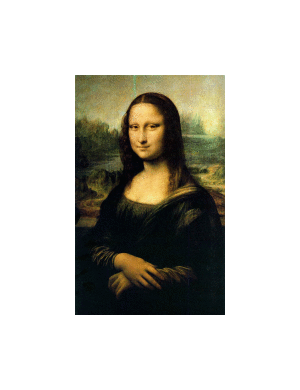
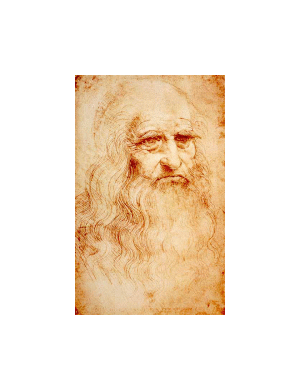
© 2024 Webpraxis Consulting Ltd. – ALL RIGHTS RESERVED.